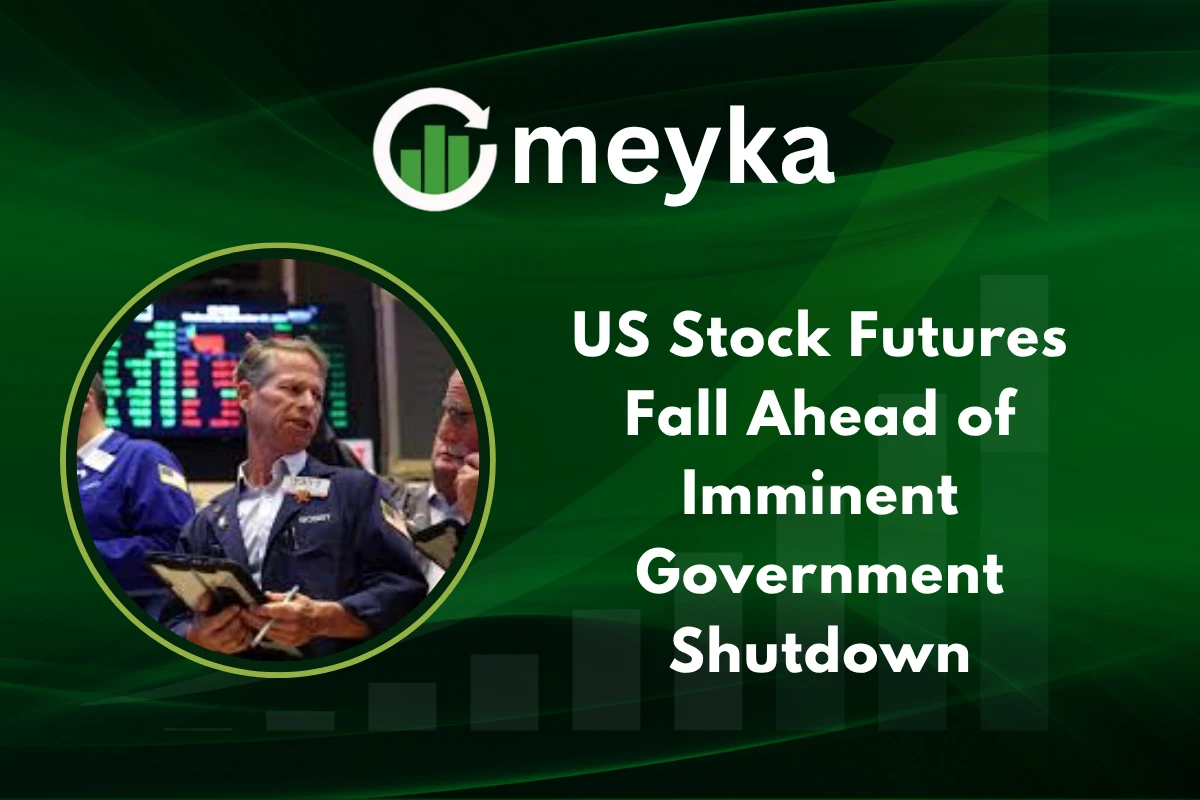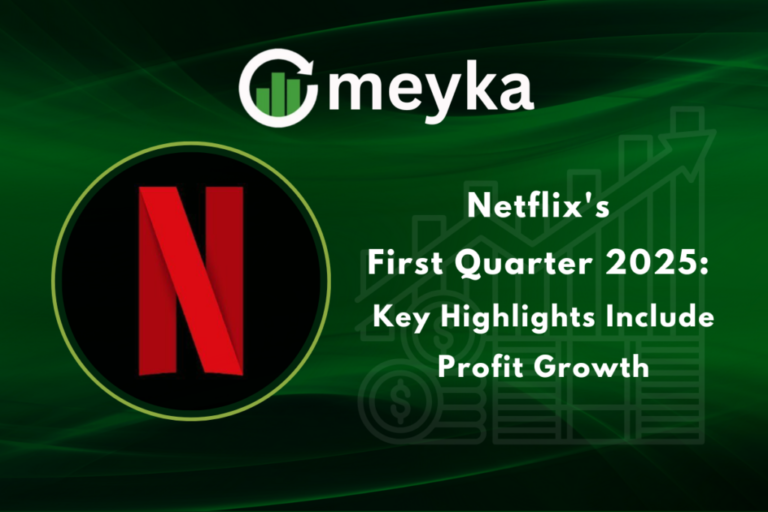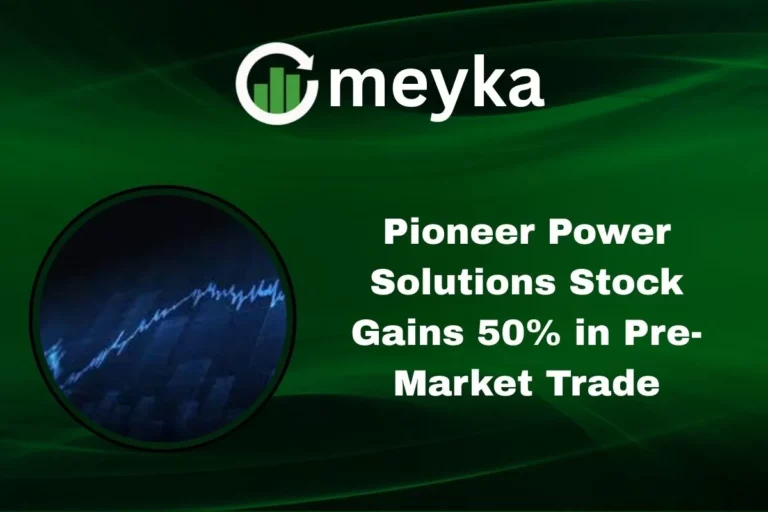US Stock Futures Fall Ahead of Imminent Government Shutdown
U.S. markets opened the week under a cloud of political risk. U.S. stock Futures slid as Congress raced against a funding deadline. Traders priced the chance of a partial federal government shutdown and moved to safer assets. The drop in futures reflects real worry about disrupted services, delayed data, and higher short-term volatility.
US Stock Futures React to Shutdown Concerns
Dow Jones, S&P 500, and Nasdaq Futures Performance
Before the U.S. cash open, Dow futures, S&P 500 futures, and Nasdaq futures were all lower. The moves were modest, but steady. Futures serve as an early warning for the trading day. When they fall, it often means investors expect trouble ahead in the cash session.
Why are these moves important? Because futures show how traders react to overnight news and political headlines, they can set the tone for the whole day.
Investor Sentiment and Treasury Yields
At the same time, Treasury yields ticked higher on some front-end maturities, while long-dated yields were mixed. Investors rebalanced exposure away from riskier equity positions into safer government paper and cash. That rotation is typical when the calendar points to political gridlock.
What does rising yields mean? Higher short-term yields often reflect pricing for more political or economic uncertainty, which can hurt stocks if it persists.
Why Are US Stock Futures Falling?
Political Gridlock in Washington
The immediate trigger is stalled funding negotiations in Congress. Lawmakers must pass continuing resolutions to fund parts of the government, and talks have repeatedly run into partisan blocks. A failure to pass funding by midnight would mean a partial shutdown, a real-world disruption that markets dislike. (BBC, Reuters)
Why does a shutdown hit markets? Because it can pause federal services, delay economic data, and create uncertainty about consumer support programs. All of that can dampen growth expectations.
Historical Patterns of Shutdowns and Markets
Historically, short shutdowns have produced limited long-term damage to equity markets. Yet they create short-term volatility. Traders price the likely economic hits and the potential for delayed data releases, such as jobs reports, which can change Fed expectations. The next few trading sessions will be a test of patience.
How have markets reacted before? Markets often dip initially but recover if the shutdown is brief. The key risk is a prolonged stalemate.
Global Markets and the Impact of US Stock Futures
Asian and European Market Reactions
Global markets reacted to the U.S. political risk. Asian markets showed mixed moves after U.S. futures fell, and European indices tracked the cautious tone. When U.S. futures fall, global risk appetite often contracts because the U.S. market sets a reference for global liquidity.
Do international markets always follow the U.S.? Often they do, but local factors can moderate the reaction.
Dollar Strength and Commodity Moves
The U.S. dollar can strengthen when risk rises, and safe-haven flows push money into Treasuries. Commodities that rely on global growth may pull back if investors see lower demand ahead. That pattern plays out quickly when futures move. (Yahoo Finance, Reuters)
Why watch the dollar and commodities? They give clues about whether investors expect slower global activity.
How Analysts View US Stock Futures Amid Shutdown Risk
Short-Term Volatility Predictions
Analysts expect higher intraday swings. Many recommend smaller position sizes and tighter stops for traders. Options market activity tends to rise as traders hedge against swings. (CNBC)
What should traders expect? Bigger price moves, especially around key headlines or vote tallies in Congress.
Longer-Term Economic Implications
If a shutdown lasts, the risks widen to include delayed economic data and potential consumer stress. That could slow growth and change the Fed’s view on rates. Longer-term investors watch fundamentals, but short-term traders must respect the political calendar.
Will a short shutdown change the Fed’s path? Only if it meaningfully alters employment or inflation data over several months.
The Role of Technology in Stock Market Predictions
AI Stock Research in Market Forecasting
Many trading desks now use AI Stock research to scan news, vote tallies, and market signals. These tools can flag live political shifts and produce quick scenarios for traders. AI helps process the fast flow of headlines around shutdown votes.
Benefits of AI Stock Analysis for Investors
AI can model thousands of market scenarios quickly, giving traders multiple “what if” paths. It doesn’t replace judgment, but it speeds decision-making during volatile windows. AI Stock Analysis can spot patterns and suggest hedges that a single analyst might miss.
Impact of AI Stock in Financial Reports
Financial newsrooms and data services now tag articles with AI Stock so automated models pick them up. That speeds how fast signals from TV, Congress updates, and filings become trading triggers. Faster signals mean quicker market moves.
What Investors Should Watch Next
Key Deadlines in Congress
The critical calendar items are the funding deadlines in the next 24–48 hours, and any votes on stopgap measures. Investors should track official tally updates and read summaries from major outlets like CNBC and Reuters. The voting schedule will determine how markets open and close in the coming sessions.
What’s the single most important thing to watch? Look at whether a continuing resolution or short-term funding bill can pass before the deadline.
Federal Reserve Policy and Rate Decisions
The Fed’s commentary matters as well. If economic releases are delayed by a shutdown, the Fed might face a foggier data set. That increases policy uncertainty, which is negative for risk assets. Traders will monitor Fed speakers and any messaging on how political risk affects rate planning. (BBC)
How does a shutdown affect Fed decisions? Directly, it may make data-driven decisions harder; indirectly, it can nudge markets toward caution.
Conclusion
US Stock Futures are a first line of defense for markets, and they fell as the shutdown risk rose. Traders shifted into safe assets, yields moved, and global markets took notice. In the short run, futures tell us that investors prefer caution.
Over the long run, a short shutdown may matter little. But a prolonged funding standoff would change the math for growth and policy. Keep an eye on Congressional votes, Treasury yields, and Fed commentary. In volatile times, patience and risk control are the best strategies.
FAQ’S
US Stock Futures are financial contracts that allow traders to speculate on the future value of indexes like the Dow, S&P 500, and Nasdaq. They help predict market direction before the opening bell.
US Stock Futures often drop before a shutdown because political uncertainty lowers investor confidence, drives risk aversion, and increases market volatility.
Movements in US Stock Futures influence Asian and European markets since they provide an early signal of Wall Street’s direction and global investor sentiment.
US Stock Futures trade nearly 24 hours a day on platforms like CME Globex, starting Sunday evening until Friday, with brief daily breaks.
Yes, investors use US Stock Futures to hedge portfolios against short-term volatility, manage exposure to indexes, and protect against economic or political risks.
Disclaimer
This is for information only, not financial advice. Always do your research.






